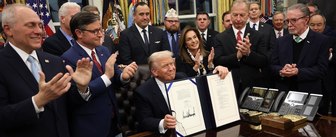Many Americans believe that at least some health decisions are best made by the adults who are most affected, not by the people who are traditionally seen as authority figures — such as teachers and doctors. The latest Economist/YouGov Poll asked about decisions on both COVID and cancer. It found that 42% of Americans say parents should have most of the authority to decide if K-12 students should wear masks; just 7% say teachers. While more Americans would give doctors than patients or their families the authority when it comes to deciding on medical treatments, more than one-third think treatment decisions for COVID-19 or cancer should lie with patients or their families. When it comes to masks being required in doctors’ offices, though, 56% of Americans think doctors should get to decide.
The preference for individual decision-making for each of the questions asked in the poll is especially strong among Americans who are not vaccinated, particularly the 21% who say they will not get vaccinated. The will-not-get-vaccinated group has a distinct political identity: It is composed of more than four times as many Republicans as Democrats.
Whether or not children are vaccinated depends a great deal on their parents’ vaccination status. Fully vaccinated parents are three times more likely than parents who are not fully vaccinated to have had their 5- to 18-year old children vaccinated.
See the toplines and crosstabs from this Economist/YouGov Poll
Methodology: The Economist survey was conducted by YouGov using a nationally representative sample of 1,500 U.S. adult citizens interviewed online between February 26 - March 1, 2022. This sample was weighted according to gender, age, race, and education based on the 2018 American Community Survey, conducted by the U.S. Census Bureau, as well as 2016 and 2020 Presidential votes (or non-votes). Respondents were selected from YouGov’s opt-in panel to be representative of all U.S. citizens. The margin of error is approximately 3% for the overall sample.
Image: Getty











